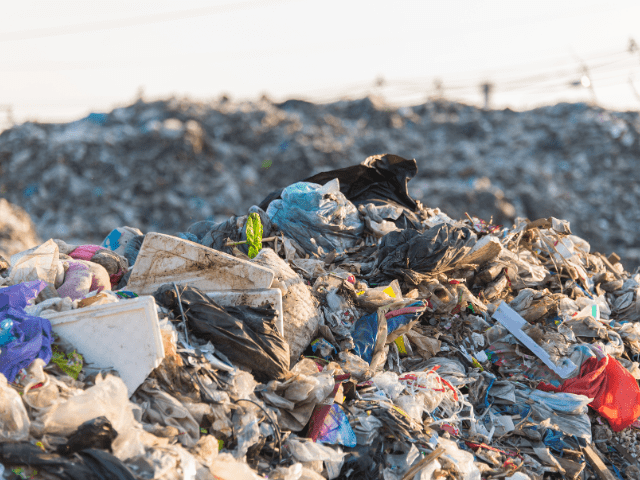Integrating circularity into community systems and local economies can drive resilience, climate action, and biodiversity conservation while also offering cities the tools to support social equity, local job creation, public health, and community wealth.
The Cities Summit of the Americas is just around the corner, and ICLEI is excited to host a session on urban development and the circular economy. This session will illustrate how cities move from big-picture theory toward locally relevant, on-the-ground systems transformation to promote a just transition from a linear to a circular economy. In the meantime, we want to take a deeper look at ICLEI’s Circular Development Pathway, and how our members are giving rise to new local economies that are productive rather than extractive, where resources are preserved instead of wasted.
How Do Circular Economy Practices Integrate with Climate Action Efforts?
Local government and sustainability practitioners are already steering their organization’s efforts to integrate circular economy practices in the urban space and promote a just transition through actions such as zero waste initiatives, green workforce development, and sustainable public procurement. For example, the City of Hoboken, New Jersey is addressing the economic, social, and environmental costs of waste management through its Zero Waste Initiative. Once implemented, their systemic, circular approach to materials management will reduce solid waste volumes, provide food to those in need, establish economies of scale for the reuse and repair of certain products, and mitigate greenhouse gas (GHG) emissions associated with waste management.

King County, Washington’s Re+ Plan and resulting actions are focused on “…minimizing King County’s environmental footprint, creating more green jobs, diverting waste from the landfill, and ensuring everyone in King County has equal access to efficient waste services.” The County’s innovative approach includes supporting the statewide adoption of an Extended Producer Responsibility (EPR) program, Circular Economy Grants focused on Prevention/Reuse and Recycling/Composting, and City Grants for cities to implement innovative zero waste and recycling programs. Coupled together, these initiatives are leading King County to a greener economy and achieving climate goals by reducing emissions.
Hoboken and King County are examples of leaders in local government advancing circular economy practices, and many communities are at different stages of this work. For those local governments in a more formative phase, a great place to start is internally, looking at what steps can be taken to promote more circular practices within operations. Supply chain emissions accounting provides a starting point for this work, and ICLEI USA can provide guidance on this. Additionally, public procurement wields enormous purchasing power. Leveraging purchasing power by promoting public procurement practices that are sustainable and circular through a sustainable purchasing policy play a key role in a communities transition to a circular economy. Lastly, completing a community-wide, consumption-based GHG inventory can help local governments identify circular strategy entry points while demonstrating circular economy leadership and establishing priorities for elevated climate action.
What is the Circular City Actions Framework?
Through the Circular Development Pathway, ICLEI encourages its network to act across sectors and value chains to shift away from the “take-make-waste” model by implementing the Circular City Actions Framework. This framework comprises five interconnected strategies: Rethink, Regenerate, Reuse, Reduce, and Recover.
These five complementary strategies and their sub-strategies address the different roles that local and regional governments play, from public service delivery to cooperation with local stakeholders, asset management, urban planning, and regulation. They can be applied to all production, consumption, and waste management processes influenced by the local government or its residents and are most effective when implemented in parallel. Each strategy can be used in stakeholder consultations to illustrate what the circular economy looks like locally and jointly identify relevant interventions.
Advancing circular strategies through a tool such as the Circular City Actions Framework can be completed in harmony with climate mitigation and adaptation actions. Circular strategies also further equitable climate action progress by reducing GHG emissions associated with the traditional “take-make-waste” model of the linear economy. The Framework can be leveraged to engage with new community stakeholders, address consumption-based emissions from a systems perspective, and address inequities experienced by frontline communities that often experience the most acute impacts of climate change, poor air quality, waste systems, and more.
Interested in learning more about ICLEI USA’s Circular Development Pathway? Check out the following opportunities to get involved!
ICLEI USA Opportunities to Get Involved
- Register for the Cities Summit of the Americas and attend ICLEI’s session on Urban Development and the Circular Economy to hear case studies and inspirational approaches from local leaders across the Americas.
- Keep an eye out for more information on ICLEI USA’s upcoming Circular Development cohort. Details will be out in May!
- Join ICLEI USA’s Circular Development steering committee and provide input as we build out our Circular Development Pathway membership support and fee-for-service offerings. Email Alyssa Wilbur, Program Officer, at Alyssa.Wilbur@iclei.org if you want to join the committee!